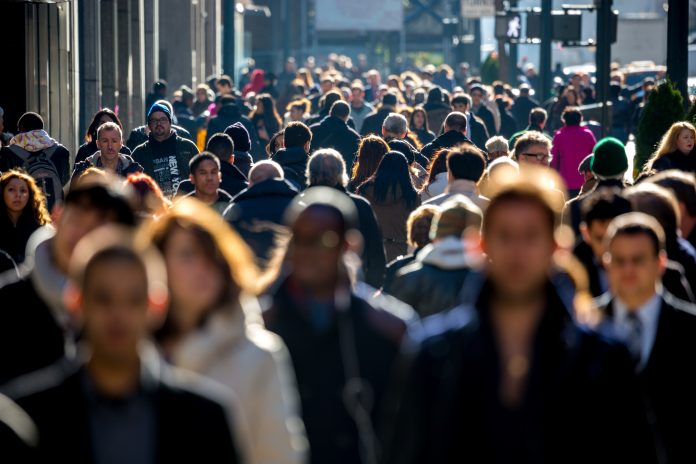A study finds that suicides by intentional drug overdose has increased among young people, elderly people, and Black women across the US
Despite overall downward trend of suicides in the United States – there has been an increase in young people aged 15-24, older people aged 75-84, and non-Hispanic Black women who have died from intentional drug overdose deaths, or suicides by an overdose of a medication or drug.
Observing factors such as time of year, length of day, and day of the week appeared to be associated with intentional overdose death rates, the study set out to find who is most at risk of suicide by drug overdose and whether this has changed in recent years.
Since 2020, around 92,000 people in the U.S. have died from drug overdoses. This accounts for the largest increase ever recorded in a year, highlighting an almost five times increase in the rate of overdose deaths since 1999.
Additional research findings concluded also that women were consistently more likely than men to die from intentional drug overdoses, with the highest rates observed in women ages 45 to 64.
Deciphering between intentional and unintentional suicides can fluctuate figures
The study, published in the American Journal of Psychiatry, was led by investigators at the National Institute on Drug Abuse (NIDA), part of the National Institutes of Health.
They noted that around 5% to 7% of the overdose deaths recorded were marked as intentional – however, it can be difficult to determine whether overdose deaths are intentional, the actual numbers are likely even higher.
Additionally, heightened suicide risk can be noted with numerous people with substance use disorders, who also develop other mental illnesses, such as mood and anxiety disorders. Also, many people who are diagnosed with other mental illnesses are often diagnosed with a substance use disorder.
Examining data from 2001 to 2019 from the Centers for Disease Control and Prevention’s National Vital Statistics System, of which provides data on multiple causes-of-death – including drug overdose death – based on death certificates for U.S. residents, the study aims to fill a gap in the existing knowledge available about suicides and suicide risk.
The researchers used data regarding overdose deaths that were classified as intentional by sex, age, and race/ethnicity, as well as by the month of the year and day of the week when the overdose occurred, to understand the characteristics of these factors.
From this, deaths were reported per 100,000 people to allow for consistent comparisons as the population changed over time.
Nora Volkow, M.D., senior author on the study and director of NIDA, said: “The distinction between accidental and intentional overdose has important clinical implications, as we must implement strategies for preventing both.
“To do so requires that we screen for suicidality among individuals who use opioids or other drugs, and that we provide treatment and support for those who need it, both for mental illnesses and for substance use disorders.”
Seasonal changes can affect numbers
Examining each year individually, they found that women ages 45 to 64 had the highest rates of intentional overdoses. When they age-adjusted intentional drug overdose deaths, they noted that deaths continued to rise in certain population subgroups.
The rates of intentional overdoses increased in these demographics:
- young men ages 15 to 24 (from 0.6 per 100,000 people in 2015 to 0.8 in 2019)
- young women ages 15 to 24 (from 0.6 per 100,000 people in 2014 to 1.0 in 2019)
- older men ages 75 to 84 (from 0.7 per 100,000 people in 2001 to 1.6 in 2019)
- older women ages 75 to 84 (from 0.8 per 100,000 people in 2001 to 1.7 in 2019), and
- non-Hispanic Black women (from 0.4 per 100,000 people in 2013 to 0.7 in 2019).
“The risk of intentional overdoses, and suicide risk in general, is not static”
The data additionally revealed that intentional overdose rates were highest on Mondays and lowest on weekends, Friday to Sunday when investigating when overdose deaths were most likely to occur. Moreover, social factors, such as increased social interactions over the weekend or a reluctance to begin the work week, may contribute to the variability.
Intentional overdose rates also varied by month, with lowest rates noted in December and highest rates in late spring and summer, furthering existing observations of seasonal variations in suicide risk.
Some theories which can help to explain patterns in suicides are that both social and biological factors may play a role in number fluctuations, such as, low rates in December may be related to a more positive and hopeful mood during the holiday season.
Conclusively, the increase in intentional overdose risk with longer daylight hours in May through August may be related to seasonal changes in the availability of molecules called mu opioid receptors in the brain. These opioid receptors influence mood and behaviors and are targets of opioid drugs, the most frequent substances identified in intentional overdose deaths.
Stressing the need to address co-occurring mental health conditions holistically
Emily Einstein, Ph.D., chief of NIDA’s Science Policy Branch and an author on the study, said: “This research underscores the importance of external support structures and environmental factors in determining a person’s suicide risk.
“The risk of intentional overdoses, and suicide risk in general, is not static. This is crucial for clinicians to keep in mind, as they may need to assess patients’ suicide risk frequently rather than at one point in time.
“It is also important for friends and family members of people who may be at an increased risk of suicide, and for those people themselves, so that they can be aware of the greatest periods of risk and seek help when needed.”
If you or someone you know is in crisis and needs immediate help, use these sources:
USA:
Call the National Suicide Prevention Lifeline at 1-800-273-TALK (8255)
Learn more about suicide prevention and ways you can help someone who might be at risk for self-harm.
UK:
Samaritans: www.samaritans.org| 116 123
CALM: Campaign Against Living Miserably| 0800 58 58 58
Rethink: https://www.rethink.org/ | 0808 801 0525
Papyrus – for people under 35: https://www.papyrus-uk.org/hopelineuk/ | 0800 068 4141
SOS Silence of Suicide: https://sossilenceofsuicide.org/what-where-why/ | 0300 1020 505











